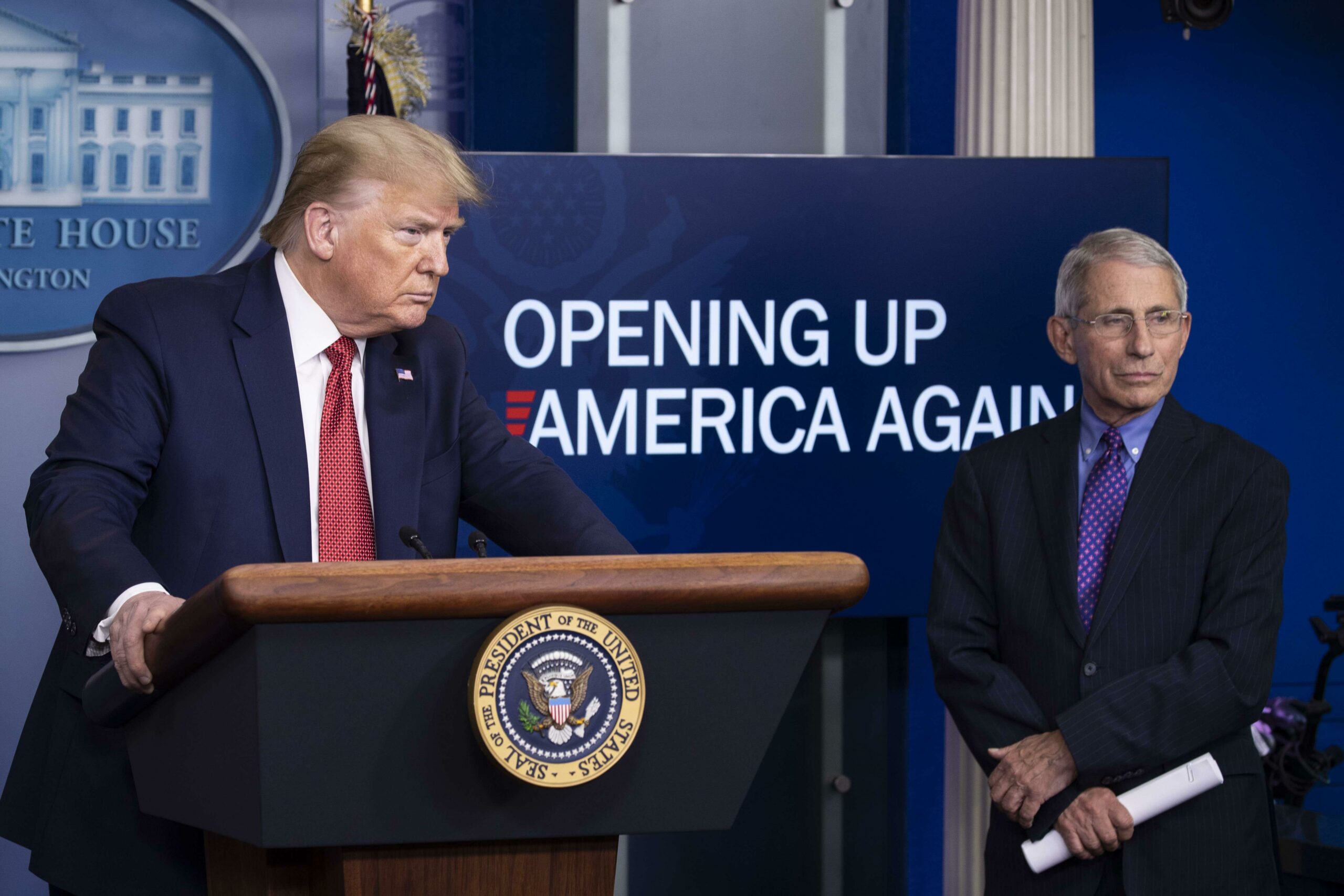Features
President Trump’s ‘Opening Up America Again’ Plan Includes Phased Venue Openings; Says Sports ‘Starting Without Fans’

(AP Photo/Alex Brandon) –
President Donald Trump announces his “Opening Up America Again” plan accompanied by Dr. Anthony Fauci, director of the National Institute of Allergy and Infectious Diseases, in the James Brady Press Briefing Room of the White House, Thursday, April 16, 2020, in Washington.
When specifically asked about the return of concerts and sporting events during the press conference, Trump said he “spoke to the [sports] commissioners yesterday,” and that “many of them are going to be starting without the fans” with events “made for television.” He also noted “fans will start coming in—maybe they’ll be separated by two seats. And then ultimately we want to have packed arenas.”
When Dr. Anthony Fauci, the director of the National Institute of Allergy and Infectious Diseases, was initially asked about the return of packed sporting events and concerts he was more cautious. “The answer is, it is conceivable that we will be able to do that,” he said. “I think there will always be a tension in making sure we don’t do all that packing together.” He went on to note the importance of having the “flexibility” if there are “setbacks,” before finally concluding that, “this is uncharted water.”
In terms of his “Opening Up America Again,” the plan’s benchmarks include downward trajectories, reported within a 14-day period, of influenza- and COVID-like illnesses as well as documented COVID-19 cases and positive tests as a percentage of total tests administered.
Phase one of the plan sets out guidelines to be implemented by states and allows employers in places like movie theaters and sporting venues “to operate under strict physical distancing protocols,” including six feet of separation and gatherings of no more than 10 people when such distancing is not possible. It also calls for employers to minimize non-essential travel.
Phase two calls for employers in states and regions with no evidence of a rebound in infection rates to continue operating with strict distancing measures but with expanded gatherings allowed. “Social settings of more than 50 people, where appropriate distancing may not be practical, should be avoided unless precautionary measures are observed,” the plan stated. The phase also calls for travel resumption.
Both phase one and two call for vulnerable individuals — defined as those who are “elderly” or have “serious underlying health conditions, including high blood pressure, chronic lung disease, diabetes, obesity, asthma and those whose immune system is compromised such as by chemotherapy for cancer and other conditions requiring such therapy” – to continue to shelter in place.
Phase three calls for “limited physical distancing protocols” at large venues and allows for vulnerable individuals to “resume public interactions,” but with “physical distancing, minimizing exposure to social settings where distancing may not be practical, unless precautionary measures are observed.”
The third phase also calls for low-risk individuals to “consider minimizing time spent in crowded environments” and for a resumption of non-essential travel.
All phases of the guidelines call for employers to develop plans for social distancing; use of protective equipment; administration of body temperature checks; testing, isolating, and contact tracing; and sanitation and disinfection of high-traffic workplace areas.